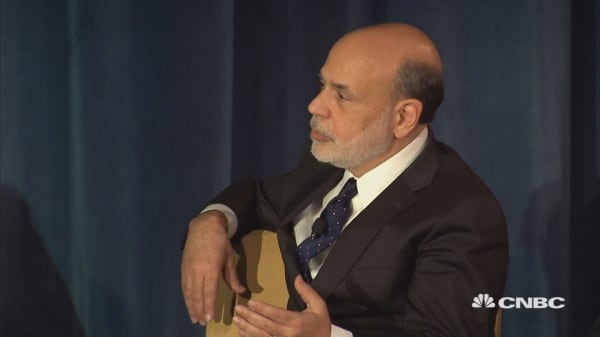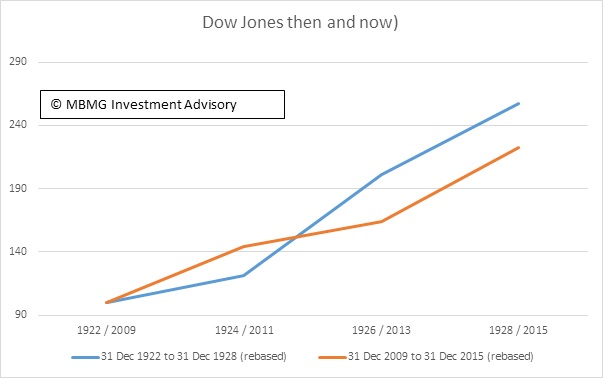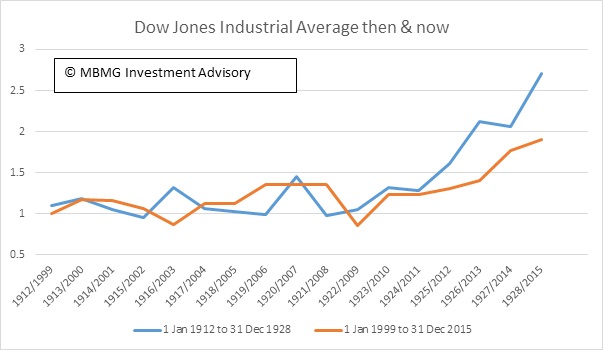Over the last decade, I've found my opinions coinciding more and more with those of SocGen strategist and "uber-bear" Albert Edwards. Last week he hit the headlines again with a claim that a "gut-wrenching slump" in profits amounts to an almost-certain predictor of recession. While the historic evidence for this is compelling, I'm not so sure this time couldn't be slightly different -- at least in terms of causes and effects.
While I share Albert's concerns about corporate profit implosion - not just in the U.S. but also in Japan and China - I suspect this will cause policymakers to respond aggressively.
Daily levels of the S&P 500 and Dow Jones Industrial Average seem to be the main data that drive the U.S. Federal Reserve and it's hard to imagine that equity weakness wouldn't elicit further well-intended, if ultimately self-defeating, responses from Chair Janet Yellen and her co-conspirators on the Federal Open Market Committee. These measures almost certainly wouldn't work in any meaningful way but might achieve the result of further kicking the can until a different pin comes along to burst their giant bubbles.









